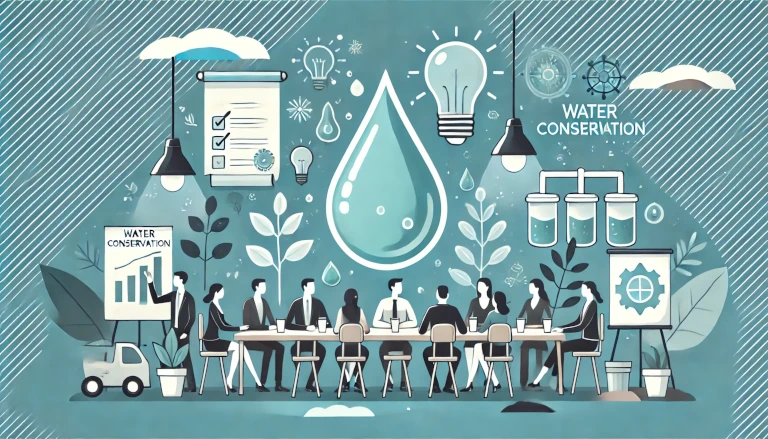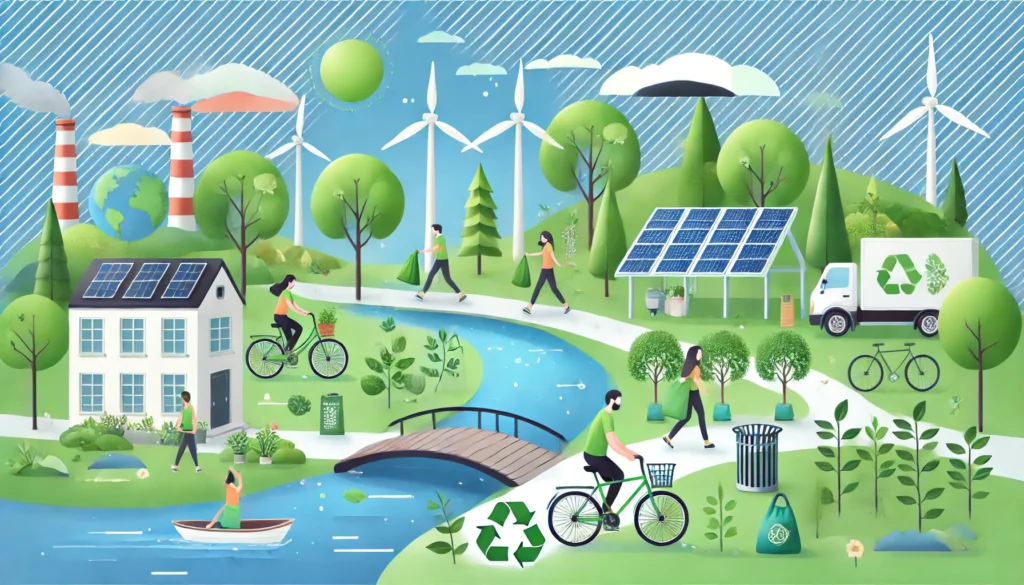Water conservation is essential for creating sustainable communities. One effective way to manage water resources in housing societies, businesses, and communities is by forming a Water Conservation Committee. This committee is responsible for promoting water-saving practices, monitoring water usage, and implementing strategies to reduce consumption. By understanding the roles and responsibilities of a Water Conservation Committee, communities can work together to achieve long-term sustainability.
In this blog post, we’ll explore the key roles and responsibilities of a Water Conservation Committee and how they contribute to efficient water management.
Key Roles of a Water Conservation Committee 🧑🤝🧑💧
A Water Conservation Committee serves multiple roles, from planning water-saving initiatives to educating residents and tracking progress. Here are the main roles this committee plays:
1. Creating Water Conservation Policies 📜
The committee is responsible for developing water conservation policies tailored to the community’s needs. These policies outline best practices, encourage responsible water usage, and set guidelines for reducing waste.
- Example: Implementing a rule that restricts washing vehicles to specific days to save water.
2. Planning and Implementing Water-Saving Programs 🗂️
The committee plans and implements water-saving programs that can be adopted across the community. This may include rainwater harvesting, drip irrigation, and installing low-flow fixtures.
- Example: Setting up a rainwater harvesting system for garden irrigation in a housing society.
3. Conducting Water Audits 📊
A key role of the committee is to conduct regular water audits to monitor water usage patterns. This helps identify areas where water is being wasted and allows the committee to develop targeted solutions.
- Tip: Track water usage monthly to identify patterns and areas for improvement.
4. Educating and Raising Awareness 🧑🏫
Educating the community about the importance of water conservation is essential. The committee organizes workshops, meetings, and campaigns to spread awareness and encourage residents to adopt water-saving habits.
- Example: Hosting workshops on efficient water usage, such as using buckets instead of hoses for car washing.
5. Setting Water Conservation Goals and Targets 🎯
The committee sets achievable goals for reducing water usage, such as cutting consumption by a certain percentage over a set period. These targets provide a clear objective for the community to work towards.
- Tip: Set realistic, measurable goals that can be tracked over time, such as reducing water usage by 20% within six months.
Responsibilities of a Water Conservation Committee 🌿
Beyond their roles, the committee has several important responsibilities to ensure effective water management:
1. Monitoring and Reporting Water Usage 📝
The committee is responsible for monitoring water consumption and regularly reporting on the community’s progress. This helps maintain accountability and encourages residents to stay committed to conservation efforts.
2. Maintaining Water Conservation Infrastructure 🛠️
The committee oversees the maintenance of water conservation infrastructure, such as rainwater harvesting systems and low-flow fixtures. This ensures that all systems function properly and contribute to water savings.
- Example: Regularly inspecting and maintaining rainwater tanks to prevent leaks or contamination.
3. Enforcing Water Conservation Policies 📋
To promote compliance, the committee ensures that water conservation policies are followed by all residents. This includes addressing violations, providing guidance, and taking corrective actions when necessary.
- Example: Monitoring car wash practices and enforcing restrictions on excessive water use.
4. Reviewing and Updating Conservation Strategies 🔄
Water conservation needs may evolve over time, so the committee is responsible for reviewing and updating conservation strategies to meet new challenges. Regular assessments help ensure that the community’s approach to water conservation remains effective and relevant.
- Tip: Review strategies annually and make adjustments based on changes in water usage or community needs.
5. Facilitating Community Engagement 👫
Engaging the community is crucial for successful water conservation. The committee organizes activities, such as clean-up drives and water conservation challenges, to foster a sense of collective responsibility.
- Example: Launching a “Water Saver of the Month” challenge to reward residents who conserve the most water.
Example of a Successful Water Conservation Initiative 🏅
In a housing society in Pune, the Water Conservation Committee implemented a drip irrigation system in communal gardens and installed low-flow faucets in all units. These initiatives reduced the society’s water usage by over 25%, showcasing the impact a well-organized committee can have on water conservation.
How to Form an Effective Water Conservation Committee 🧑🤝🧑
To establish a successful committee, start by recruiting members who are passionate about water conservation. Ensure a diverse group with varied expertise, from plumbing to environmental sciences. Here’s a quick guide to forming an effective committee:
- Appoint a Committee Leader: Choose a leader who can guide the committee’s efforts and oversee projects.
- Set Clear Objectives: Outline the committee’s goals, such as reducing water consumption or educating residents.
- Assign Responsibilities: Divide tasks among members based on their skills and interests.
- Develop an Action Plan: Create a timeline for implementing water conservation measures and tracking progress.
Embracing Water Conservation as a Community Effort 💧🌍
The Water Conservation Committee plays a vital role in promoting sustainable water usage within a community. By planning initiatives, setting goals, educating residents, and monitoring progress, this committee ensures that the community takes an active role in conserving water. Implementing water-saving practices is not just a responsibility but a necessity for a sustainable future. Forming a Water Conservation Committee is a proactive step toward protecting our most precious resource—water.
Discover more from Green Ecosystem - Renewable Energy, Agriculture, and Environmental Sustainability
Subscribe to get the latest posts sent to your email.


